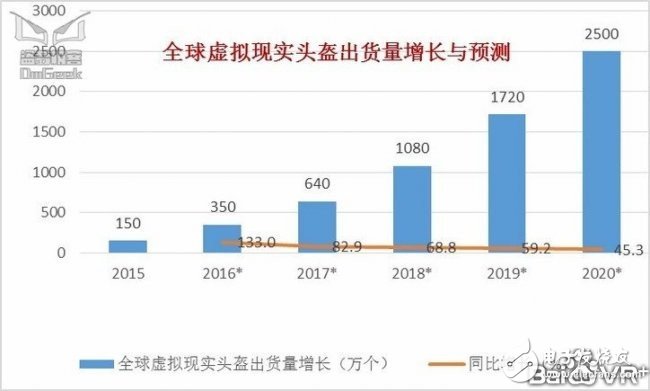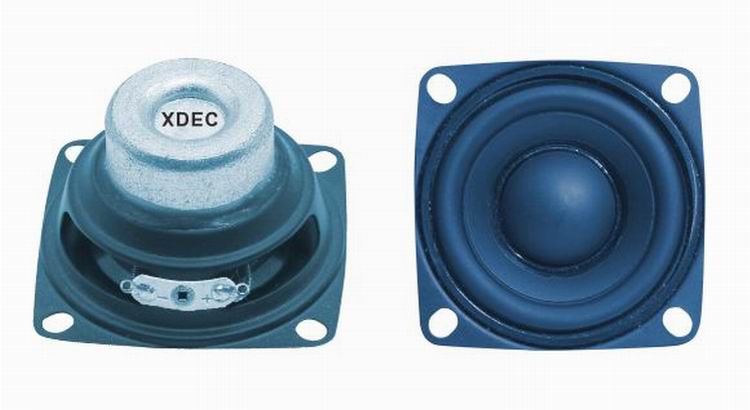The development of the VR industry involves many industrial ecosystems such as chips, wearable devices, content IP, optical devices, and system integration. It can be said that this is another concept that can drive the entire ecosystem forward after PC and mobile phones. And the electronic circle is crazy about it...
At the Google I/0 conference on May 18th, Google released Daydream, a virtual reality (VR) platform based on the Android operating system. This seems to give the domestic VR industry a strong shot. For Shenzhen's huge number of mobile phones and flat-panel companies (ODM, solution companies), the high threshold for the VR industry has been discouraged. Now the good news is coming: Google's support has smoothed the biggest threshold for software and applications, and made 2016 a truly veritable VR first year.
Samsung, Sony, Facebook, HTC and other technology giants have already launched their own virtual reality devices. According to rough statistics, as of December 2015, the number of companies involved in the virtual reality industry in China reached hundreds, not including some investors. Among them, output devices accounted for 31%, input devices were 30%, content producers accounted for 32%, and offline experience manufacturers accounted for 6%. In terms of content development, the game development team accounted for 13%, and panoramic video and film accounted for 33%.
It is undeniable that compared with international giants, domestic companies' technology accumulation in the VR field is still relatively weak, but they are very good at learning, and with keen market insight and responsiveness, they are catching up. Globally, international giants focus on the high-end market of PC VR, while domestic companies are targeting the popular niche market for VR-based machines.
The growth trend of VR industry in the next 3~5 years
According to Business Intellligence's prediction, virtual reality hardware products will form a concentrated outbreak period in the next five years, in which helmet-type equipment will grow at a compound annual growth rate of 99%; by 2020, global virtual reality helmet shipments will reach 25 million units.

Global Virtual Reality Helmet Shipment Growth and Forecast Data Source: Business Intlligence

At the same time as the development of the hardware industry, the content industry, especially the industry of virtual reality entertainment content, will also have tremendous development potential. According to statistics, the sales volume of VR market in China in 2015 was 1.54 billion yuan, and it is expected to reach 5.66 billion yuan in 2016, an increase of 267.5%. By 2020, it will exceed 70 billion yuan (equivalent to 11 billion US dollars). Business Intellligence predicts that the global virtual reality (VR, Virtual Reality) hardware and software production value will reach 6.7 billion US dollars in 2016, and will grow to 67 billion US dollars in 2020. IDC predicts that China's virtual reality device (VR) shipments will reach 480,000 units in 2016, an increase of 476% year-on-year, and the industry is experiencing explosive growth.
Dennis Laudick, vice president of ARM MPG, said that now is the best time to enter the VR industry. It is estimated that by July 2016, there will be more than 40 VR products using ARM architecture, and more than 600 products will be available at the end of the year, all over the high-end and low-end, as well as industry customization, scene and product.
Mr. Zhang Jianzhong, global vice president of NVIDIA and general manager of China, said that there are more than 600 VR companies and more than 40,000 employees in the market, and the funds raised have reached 3.8 billion. It is expected that in the next few years, VR will also show explosive growth. By 2020, VR virtual reality and AR augmented reality, its overall market size will reach 150 billion US dollars, the prospect is very broad.
Chen Huafeng, manager of Quanzhi Technology VR, believes that "the VR industry is still in its infancy, although there are some potential startups, and some giants are pouring in, but the actual sales are not large." Since 2016, Quanzhi And mainstream IC design vendors such as Qualcomm have launched VR solutions, coupled with the influx of giants such as BAT and VC support, the development of VR hardware and content will be greatly accelerated, and thus promote the popularity of users. He expects that the annual sales of domestic VR products will reach 10 million units in 3-5 years.
Chen Feng, vice president of Rockchip Global, said: "In 2015, the total amount of VR may add up to tens of thousands of units, but this year may increase exponentially. It is expected to increase several times next year." Chen Feng It is believed that the VR industry is currently mixed, and most of the products are still being tested by the industry itself, and have not really reached the hands of consumers in the front line. “The price of VR products is from the lowest to the highest, and there is a gap of 10 times.†Chen Feng believes that the first batch of consumers and users have the greatest influence on the overall reputation of the VR industry, so he hopes that the entire industry can avoid the malignancy of low prices. Competition, work together to make the reputation of the VR industry.
Full range speaker:
Speakers with working frequency response range from 150~15000Hz are called full range speakers.


FAQ
Q1. What is the MOQ?
XDEC: 2000pcs for one model.
Q2. What is the delivery lead time?
XDEC: 15 days for normal orders, 10 days for urgent orders.
Q3. What are the payment methods?
XDEC: T/T, PayPal, Western Union, Money Gram.
Q4. Can you offer samples for testing?
XDEC: Yes, we offer free samples.
Q5. How soon can you send samples?
XDEC: We can send samples in 3-5 days.
Full Range Speaker,Full Range Loudspeakers,Range Speaker,Small Full Range Speakers
Shenzhen Xuanda Electronics Co., Ltd. , https://www.xdecspeaker.com